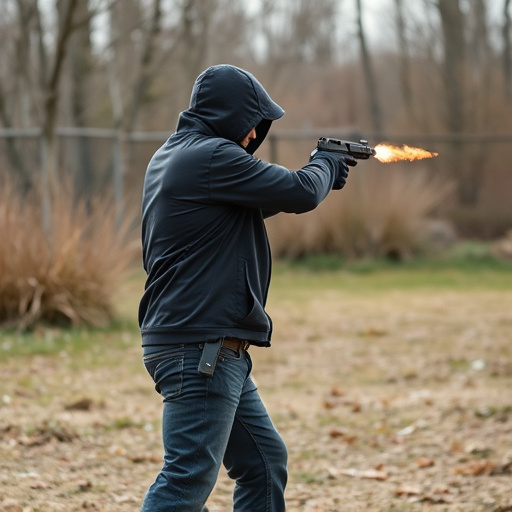Understanding pepper spray risks crucial before treatment. Seek fresh air, rinse affected areas for 15 minutes, remove contaminated clothing, and use mild soap to wash skin. Keep eyelids open when rinsing eyes, use rescue inhaler if breathing is affected, and call emergency services for severe reactions or persistent symptoms. Proper first aid alleviates discomfort and ensures swift recovery from pepper spray exposure. Learn more about treating pepper spray exposure here: How to Treat Pepper Spray Exposure.
Personal safety is paramount, especially in uncertain times. One potent tool for self-defense is inflammatory pepper spray, but understanding its risks and knowing how to treat exposure is crucial. This guide breaks down the immediate steps after pepper spray contact, providing essential first aid procedures to mitigate symptoms effectively. By learning how to manage these situations, you’ll be better equipped to handle unexpected encounters, ensuring your safety and peace of mind. Discover vital tips on “How to Treat Pepper Spray Exposure” within.
- Understanding Pepper Spray Exposure Risks
- Immediate Steps After Pepper Spray Contact
- Effective Treatments and First Aid Procedures
Understanding Pepper Spray Exposure Risks
Understanding Pepper spray exposure risks is crucial before discussing how to treat it. When pepper spray comes into contact with your eyes, skin, or respiratory system, it can cause severe discomfort and even temporary disability. The intensity of the reaction varies based on factors like the amount sprayed, duration of exposure, and individual sensitivity. In some cases, pepper spray exposure may lead to breathing difficulties, blurriness, and intense itching or burning sensations.
Knowing how to respond promptly is key. If exposed, immediately seek fresh air by moving to a well-ventilated area. Rinse your eyes thoroughly with water for at least 15 minutes to dilute the chemical agent. For skin contact, wash the affected areas with soap and warm water. In case of inhalation, move to an open space and lean forward to allow any residual spray to drain from your lungs. Seek medical attention if symptoms persist or worsen, as pepper spray can have long-lasting effects on sensitive individuals.
Immediate Steps After Pepper Spray Contact
If you’ve been exposed to pepper spray, it’s crucial to take immediate action to mitigate its effects and ensure your safety. The first step is to move to a safe location away from the source of the spray. Remove any clothing or accessories that may have come into contact with the spray, being careful not to rub or wipe the affected area, as this can spread the irritants further.
Next, flush the eyes thoroughly with clean water for at least 15 minutes. This is vital to wash away the chemicals and prevent severe eye damage. For facial exposure, apply a cold compress gently to soothe the skin. Seek medical attention if breathing becomes difficult or if symptoms persist beyond a few hours. How to treat pepper spray exposure involves staying calm, removing contaminated clothing, flushing affected areas with water, and getting professional help when necessary.
Effective Treatments and First Aid Procedures
In the event of exposure to pepper spray, effective treatments and prompt first aid procedures are crucial to mitigating discomfort and potential damage. If exposed, immediately seek fresh air by moving to an open area or turning on ventilation systems. Remove any contaminated clothing, especially around the face, neck, and eyes, as these areas are particularly vulnerable. Rinse thoroughly with water for at least 15 minutes; this helps dilute the spray’s active ingredients. For eye exposure, hold eyelids open and continue rinsing until any stinging or irritation subsides.
If breathing is affected, use a rescue inhaler if available, and seek medical attention promptly. In case of skin contact, wash the affected areas with mild soap and water to remove residual spray. Avoid using harsh cleansers which can exacerbate irritation. If symptoms persist or severe reactions occur (such as difficulty breathing, nausea, or dizziness), immediately call emergency services. Proper first aid can significantly alleviate discomfort and ensure swift recovery from pepper spray exposure.
Knowing how to treat pepper spray exposure is crucial for ensuring personal safety. By understanding the risks, taking immediate action after contact, and adhering to effective first aid procedures, you can minimize the impact of pepper spray. Remember, quick response and proper treatment are key to alleviating symptoms and restoring comfort. For detailed insights on how to manage exposure, refer to our comprehensive guide on navigating and treating pepper spray incidents.
